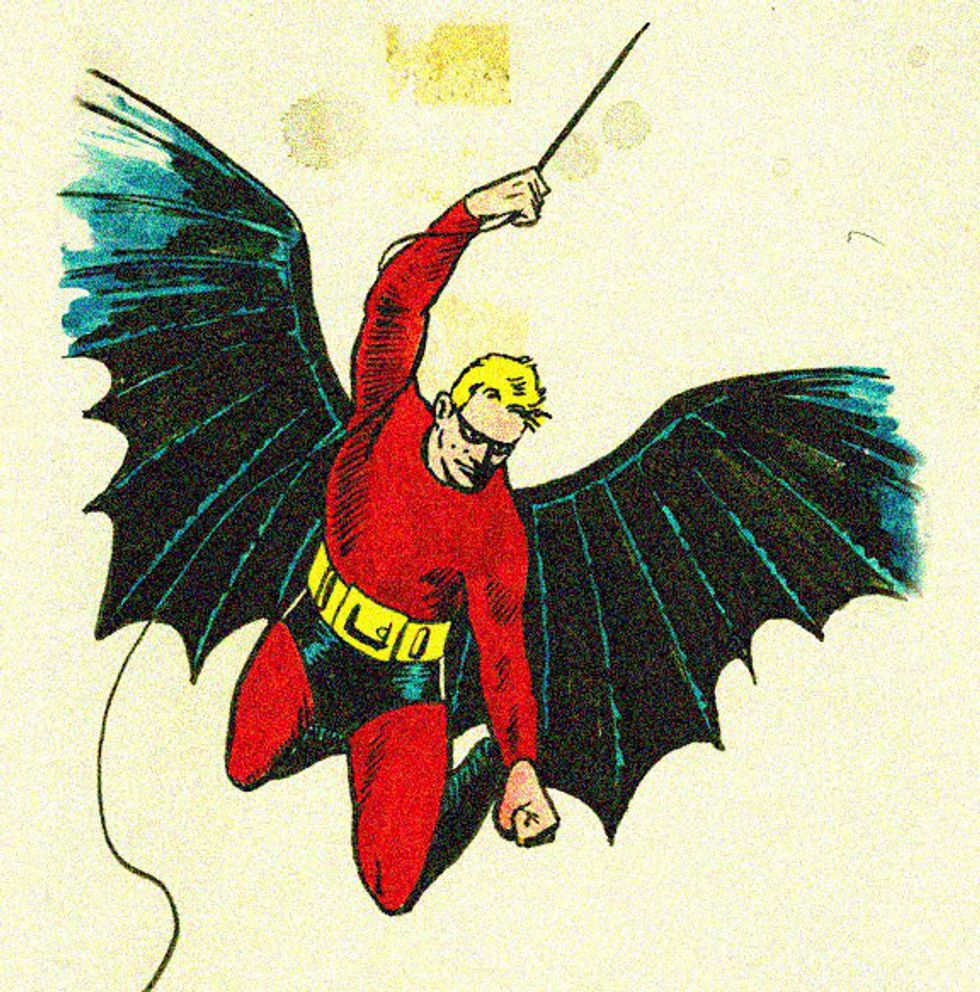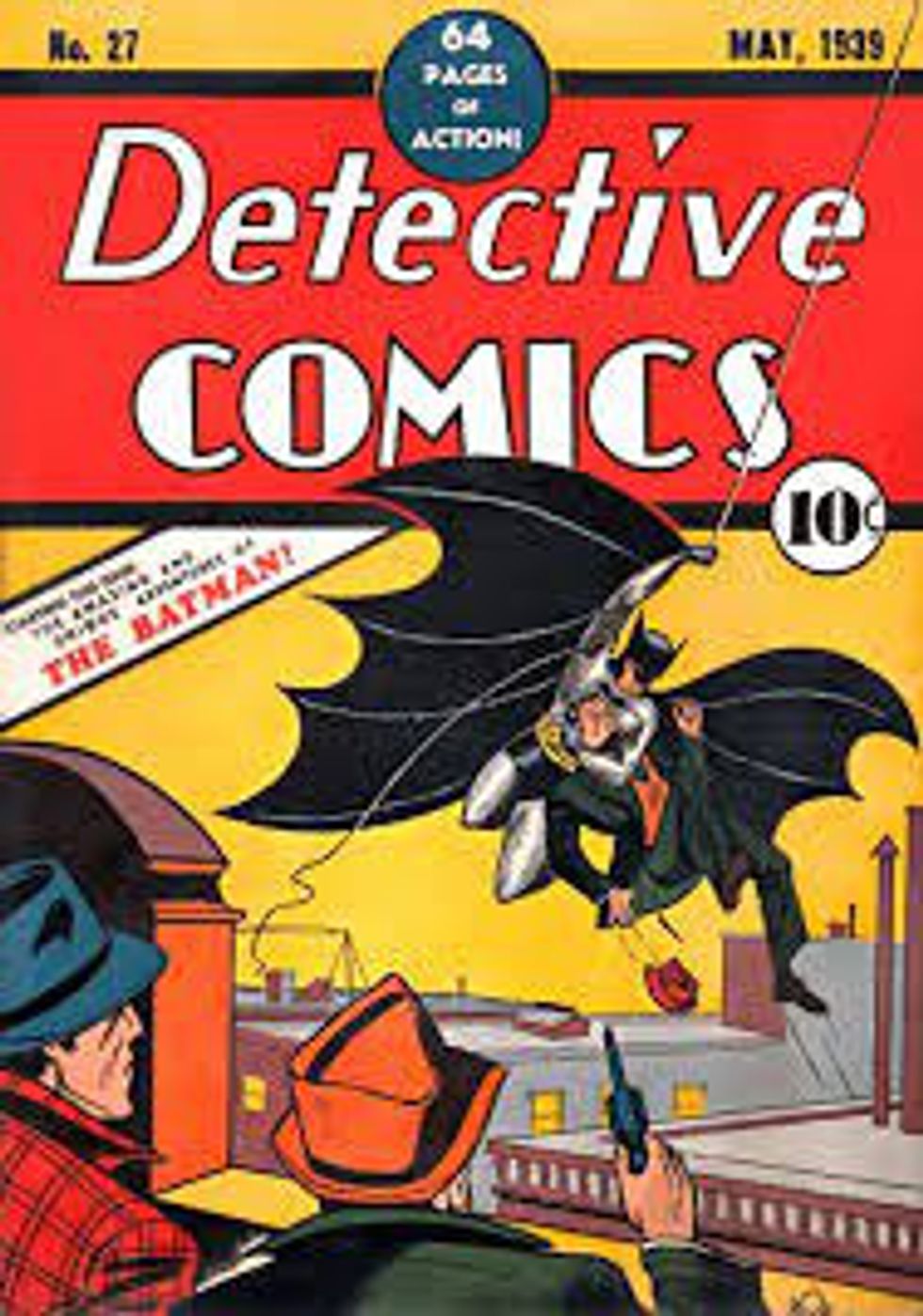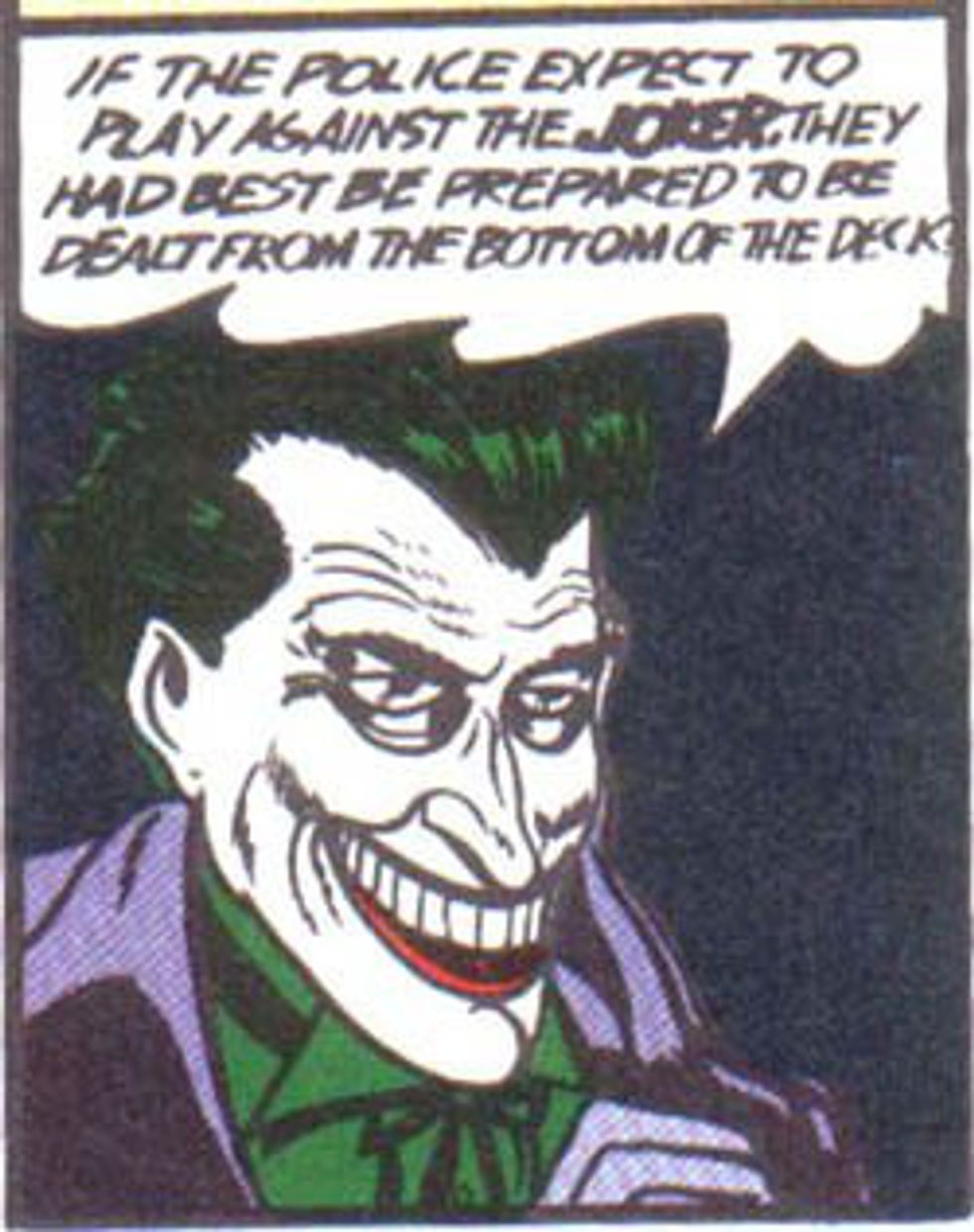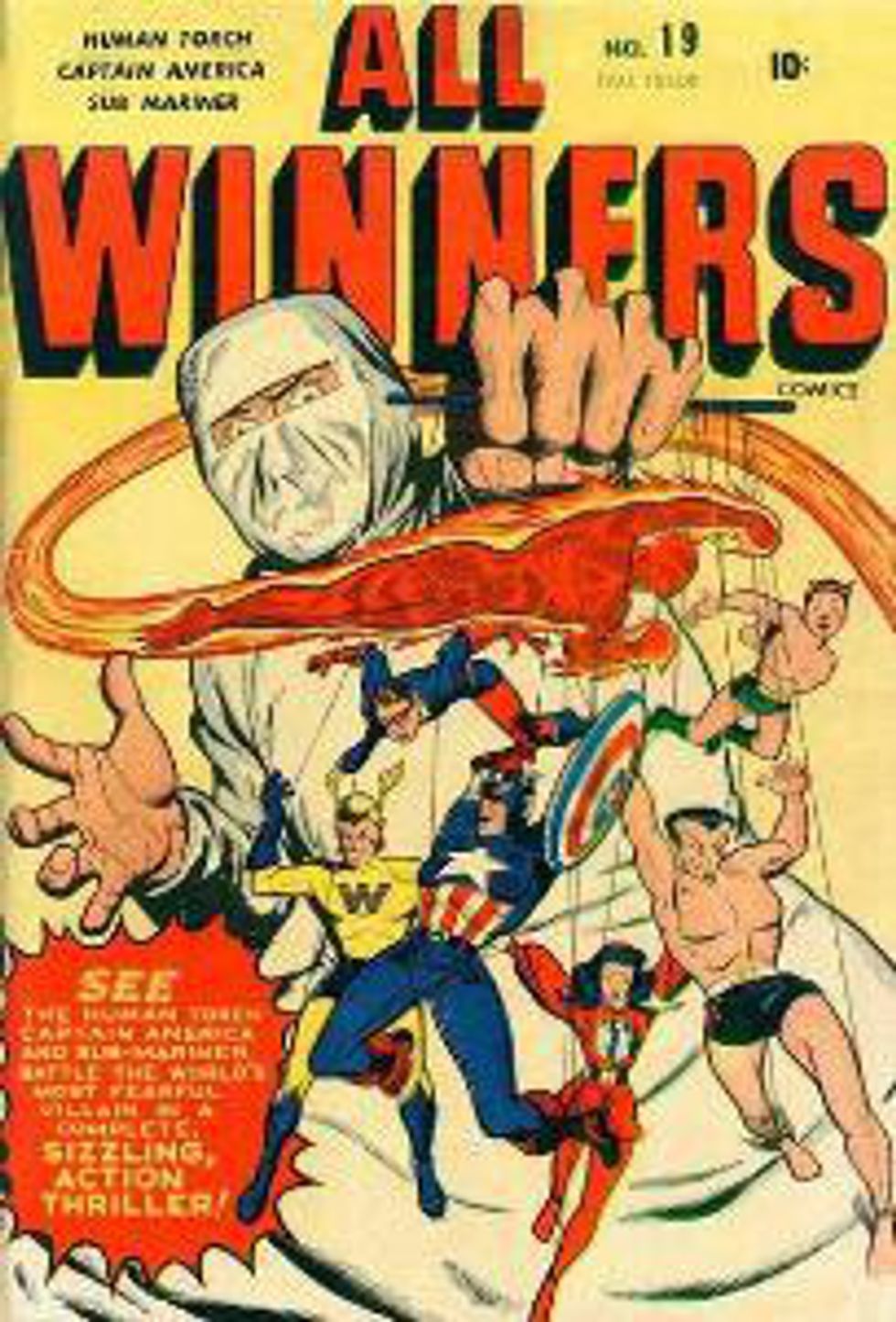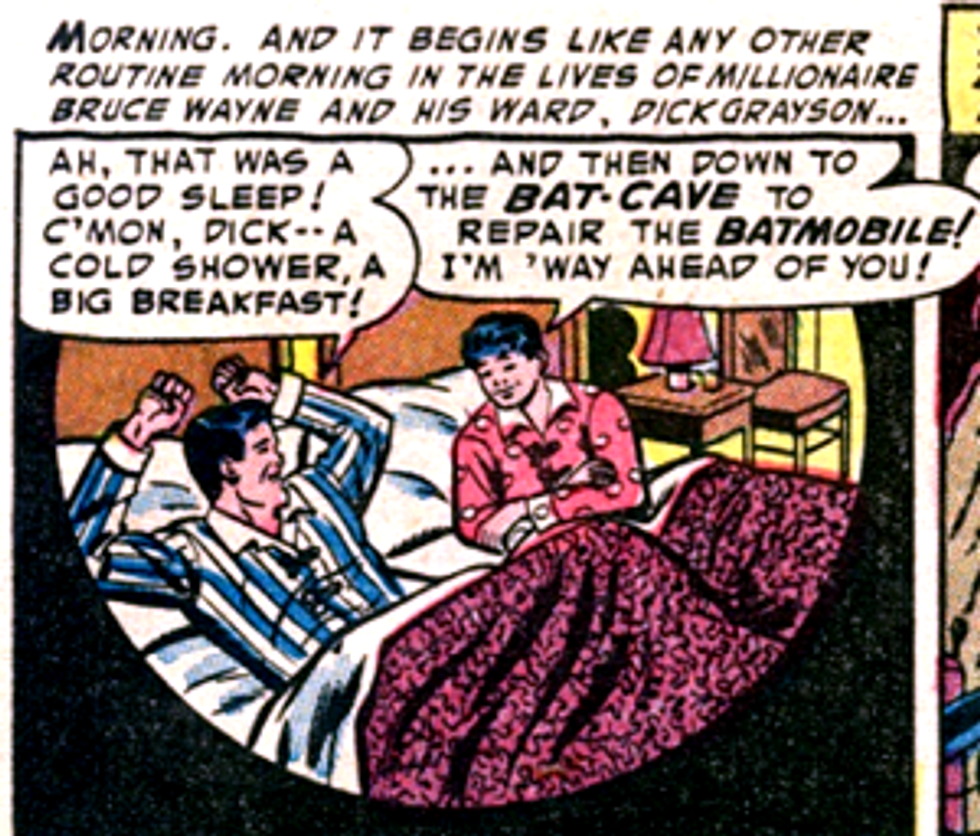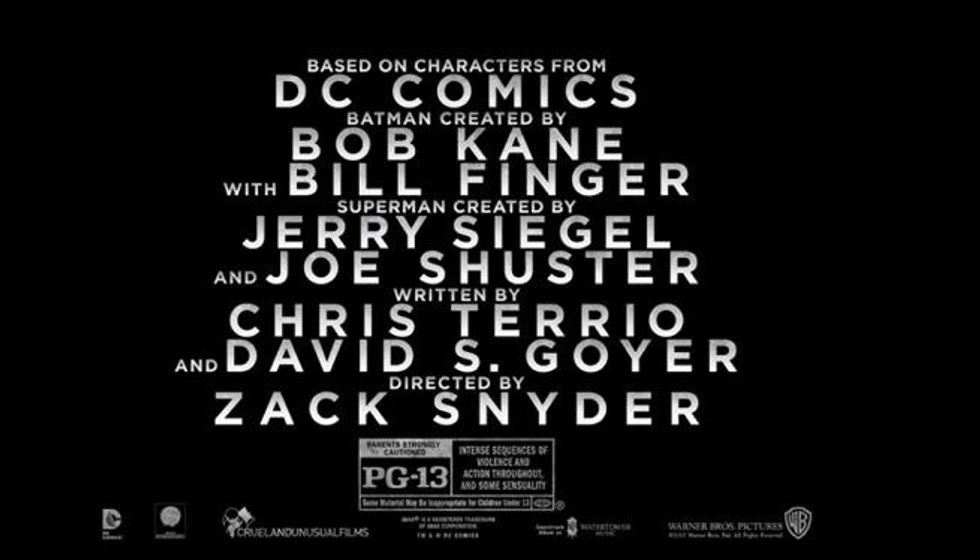We all know the origin of Batman. Rich kid, parents killed by a mugger leaving the theater. Kid grows up with a vengeance and becomes the vigilante. Simple as that. That's why there's all those movies, television programs and comics. The Dark Knight is often placed in top ten lists of greatest action movies. Go to a comic convention, and you'll likely hear people arguing over their favorite writer/artist on the series, or the best actor to play the part. Despite the massive fanbase, not many people were aware of the secret creator of Batman. Until 2015, the creator credit was to an artist named Bob Kane. This single credit, which took seventy-six years to be altered, is a defining image in the world of creator credits. Bob Kane may have been the one to receive sole credit, but Bill Finger truly created the character.
In 1938, National Allied Publications published Action Comics #1, wherein Superman made his first appearance. As the sales for Action Comics increased, other comic companies searched for another top-selling character. In 1939, Timley Comics had entered the scene with the introduction of characters such as Namor the Sub-Mariner and the Human Torch. This was also an era of growing concern over a war with Nazi Germany and a massive public appeal towards detective pulp fiction. Not wanting to miss an opportunity, the sister company of National Allied, a publisher under the name of Detective Comics, Inc. contacted Bob Kane, who was working as a small-time artist in New York City. However, Kane could not write to save his life, so he contacted a writer who was working at his studio – Bill Finger.
Kane and Finger had meetings over the character, and Kane drew a sketch of how he saw the creature of the night – a bright red spandex suit, black wings and a domino mask. Finger immediately said that the design was too Superman-like, and suggested a few changes: gray spandex, a black cape, gloves, a bat-shaped cowl, and an insignia. Kane took these ideas and put them to use, just to keep his writer on board. Kane brought these designs to the editors, without letting Finger know, and was able to negotiate sole credit on the comic, despite not actually being the writer. Kane did not know anything about the character he was being paid to create, so when asked who “the Bat-Man” is and other world-building aspects, Kane had no answers and essentially told Finger “you're the writer, you figure all that out.” Finger developed the iconic elements such as Bruce Wayne, Commissioner Gordon, the Batmobile, and Gotham City. Kane simply drew the pages for the seven-page story, “The Case of the Chemical Syndicate,” published in Detective Comics #27. The character was an instant success, and Kane was commissioned by the company to continue the stories of the character.
In 1940, the pair were given their first headlining title, Batman. Kane also had let the recognition and fame get to his head, and instead of doing the art himself, Kane began hiring ghost-artists to do the work for him and receive little to no pay for their work, even if it was entire issues. Kane discovered a 17-year-old artist, Jerry Robinson. Robinson was brought in to work on Batman #1, and had story meetings with Finger - whatever work the two would produce, Kane would get all the credit for it. At the time, Finger was not getting a creator credit, and was not being paid enough to make a living. Finger was reportedly a quiet man, and never spoke of his lack of credit within the company. However, while working on Batman, Finger met with Martin Nodell, an artist working at All-American Publications, and the two created the first incarnation of the Green Lantern. Finger began receiving a billing on a leading character, all while the Batman team was being held under Bob Kane's iron grip. It should also be noted that All-American Publications was also the original publisher of Wonder Woman related comics, before the 1946 merger.
Robinson and Finger produced the first issue of Batman, in which the Joker first appeared. Robinson has gone on record to describe the creation of the Joker; Finger brought up the film The Man Who Laughs, and from there the two developed a villain in the same style as the film, Robinson drawing a concept sketch based off of a joker playing card. Kane however, disputed this and said he was the one who came up with the idea and the two just followed what he said. Once the pages were complete, Kane put his name on them and sent them off to National's offices, who may have been aware of Kane's actions. Kane refused to acknowledge the efforts of Robinson, and claimed full creation of the Joker. Robinson died in 2011, but unlike Finger, he did received partial credit on the character.
By 1942, Batman titles were nearing Superman and Fawcett Publications' Captain Marvel (a company that would be sued by National and eventually be bought out by them) in terms of sold copies. Also around this time, National was licensing out the rights to Superman, making film and animation deals, public appearances, and other forms of multimedia. The creators of Superman, Jerry Siegel and Joe Shuster, were in a similar situation as Finger and Robinson – they were not getting any credit and were being ordered around by the higher-ups in the company. Siegel was not in contact with the Batman writer/artists, but was aware of some issues involving Kane's rights to the character. Wanting for his colleagues to be seen as equals within the company, he made a phone call to Kane. Siegel and Shuster were preparing to sue National to get credit on Action Comics and Superman. Kane reportedly acted as if he supported the two, but then contacted the superiors and within the next year, the Superman team was replaced. In 1946, Detective Comics, Inc., National Allied, and All-American Publications officially merged to become what would be known as DC Comics, a name and universe that has stayed since.
Finger eventually left the Bob Kane studio and instead worked directly for DC in the mid 1940's. Now with complete freedom on the stories he would write, Finger was given work on both Batman and Superman related titles. He still did not receive as much credit, but this was something to be expected from the company – in fact, most writers and artists working directly for the major comic publishers did not get credit at all. While working on Superman, Finger brought kryptonite into the comics, the substance having first appeared in the Superman radio program. He also introduced the character of Lana Lang to the Superboy series in 1950, who would be used in the following decades as the high school sweetheart of Clark Kent. In addition, Finger created iconic Batman characters such as the Riddler, Calendar Man, the Mad Hatter, the Penguin, and Two-Face. Finger is also one of the few writers in this era who worked for Fawcett, EC, and Timely Comics. For Timely, he created the All-Winners Squad, one of the early crossover books from that company (he may have worked on other titles, but there is no record of what issues or characters). By the 1950's, Timely would reform into Atlas Comics, then into Marvel Comics in 1960. At the time of Finger's work for Timely, the editor-in-chief was a young Stan Lee.
Many comics were canceled after World War II, while Batman comics continued to sell. In 1954, the book Seduction of the Innocent was published. This book claimed that comics were promoting violence and delinquency within America's youth, citing the popular EC company line of horror comics of the time. Batman was also called out, the author, Fredric Wertham stating that the series portrayed Bruce Wayne as a homosexual pedophile, as he spent much of his time with the young Dick Grayson. To further push his agenda of removing comic books from the newsstands and out of the hands of the children, Wertham used out of context panels from comics to illustrate the book.
Wertham brought his claims to Congress, leading to the 1954 “Comic Book Hearings.” During this, publisher of EC Comics, William Gaines, testified that he only published comics of “good taste.” Senator Estes Kefauver was doubtful of Gaines, stating that there was visible blood coming from the mouth of a decapitated head, Gaines simply said there was “a little.” After these claims went to Congress, the comic publishers met and established the Comics Code, a set of rules and guidelines on what could and could not be printed in comics, in order to protect their works from being censored by the government.
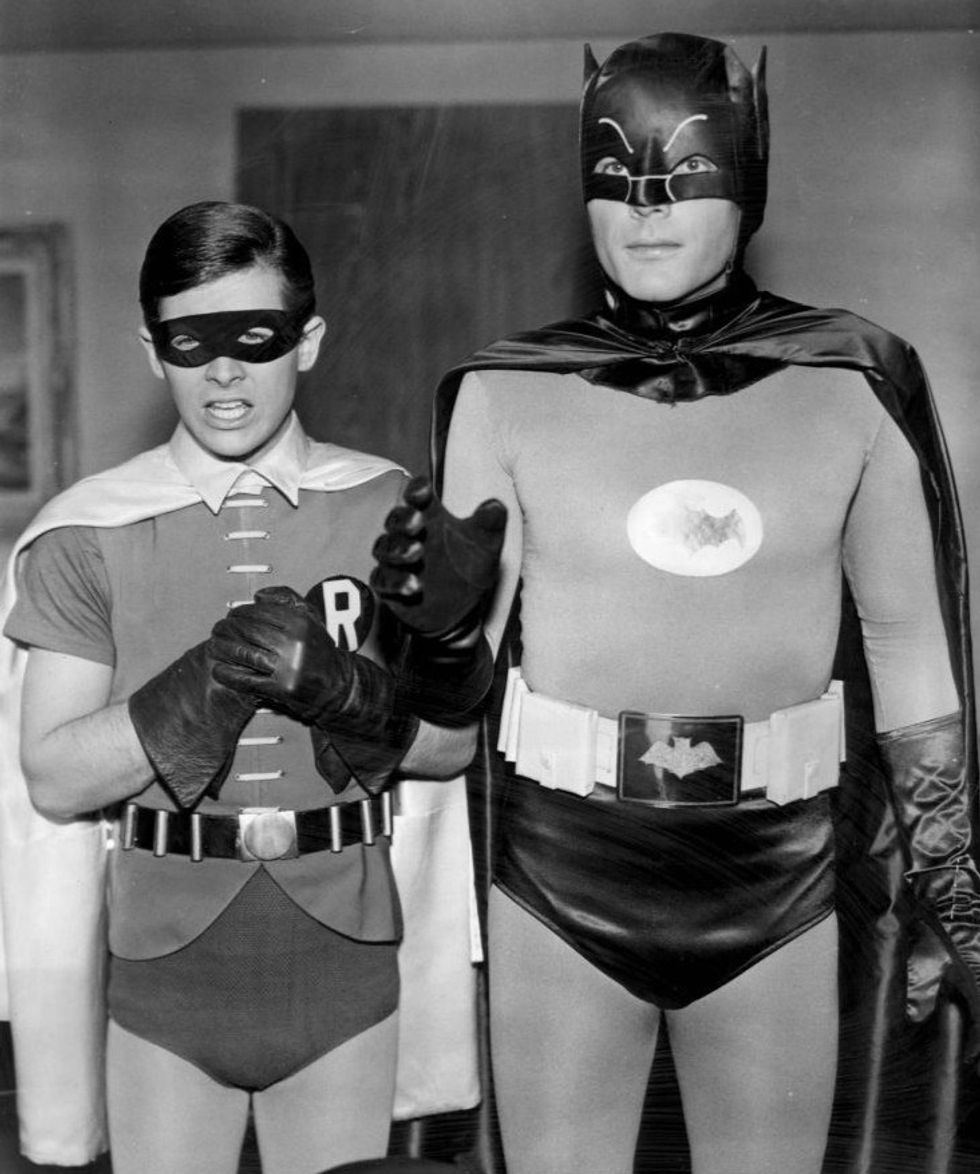
Kane wrote an open letter to fans of the character in the mid 1960s, where he said, “if Bill Finger created Batman, where is Bill Finger's byline on my strip? It is conspicuous by its absence.” Finger could not find steady work after leaving DC, and ended up getting an apartment in New York City. His family visited often, but that was not enough. While Kane made millions of dollars a year off of what the world believed to be his work, Finger struggled to get by. Bill Finger died in 1974 in poverty. After his death, Kane often would say that he wished Finger could have had a credit, but there was “nothing he could do now.” Upon Kane's own death in 1998, he was said to be the man behind the icon, and his headstone states that the co-creator of Batman was God himself.
“contributions to film by the creation of Batman.” The only book to be written on Finger is Bill the Boy Wonder: The Secret Co-Creator, a children's book – but it is still a good read and very informative. The release of this book sparked an interest in the true history behind the Dark Knight. In 2014, DC ran a “Batman Day” promotion to commemorate the seventy-fifth anniversary of the first appearance of Batman. A celebration issue was released, reprinting the story from Detective Comics #27. On the cover, Bill Finger was given credit below Bob Kane. DC announced that starting with the 2015 second season premiere of the television series Gotham and in the then-upcoming film Batman v Superman: Dawn of Justice, the creator credit would read “Bob Kane with Bill Finger.” In October 2015, this style credit was first printed in the major issues.
For now, the extra credit is nice. Still, DC Comics is still a long way
from giving proper recognition to the man who took a rough idea and
made it into the character we all know today. Without him, the iconic
images of the character – his name, his city, his greatest enemies
– would not exist. In time, maybe Bill Finger will get the credit
he deserves. Until then, second-billing is not too bad. If only his
family didn't have to wait seventy-five years for it.




